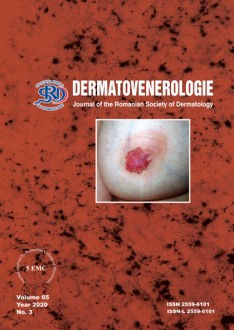Summary
Fillers are injectable substances used for reduction of wrinkles when they are placed in the skin, or give volume in the tissue, improving the contour and skin texture when they are injected deep (periosteal). In accordance with regulations, fillers are recognized and categorized as medical devices. Among the many fillers that have appeared in recent decades, hyaluronic acid has become widely used by aesthetic doctors and are preferred by patients who are looking for non-invasive methods of rejuvenation.
The number of hyaluronic acid injection procedures have risen, so have the number of post-injection complications.
Methods: The data of patients with delayed post-injection complications were extracted from the clinic archive and the following information was analysed: complication onset date, last injection date, injected product, injection amount and type, injected area, total amount of hyaluronic acid injected in the last 20 months, history of injected products, treatment of complication(s), and time of remission. We followed 10 patients who presented with late complications from one week to 1 year after the injection. Published articles on late complications and proposed treatment algorithms have been reviewed in the literature.
Results: Over a period of 8 years (2013-2020) 2,418 hyaluronic acid injection procedures were performed in our clinic in a number of 1836 patients with a total volume of 3,855 mL of hyaluronic acid. Over 95% of these patients treated were women.
Delayed complications occurred between one week after injection and up to one year.
The most common complications were visible or only perceived as nodules on palpation and localized edema. Among the possible causes that were discussed—nickel allergy, dental treatments, pre-existing conditions - acne, rosacea, and injection defects.
Conclusions: The causes of late complications can be associated with— the injected volume, the number of injected products, the fact that the products were injected simultaneously in the same session, and that they could be related to the patient’s allergic pathology.


